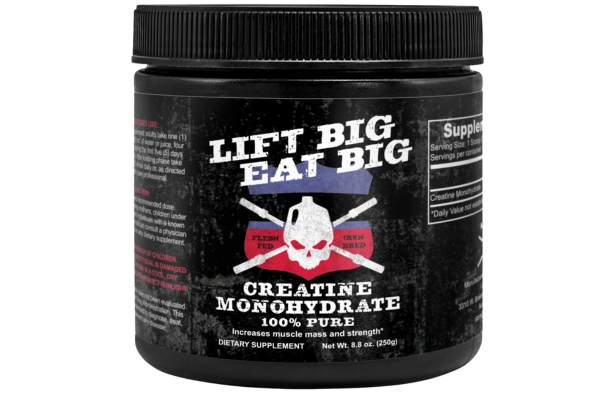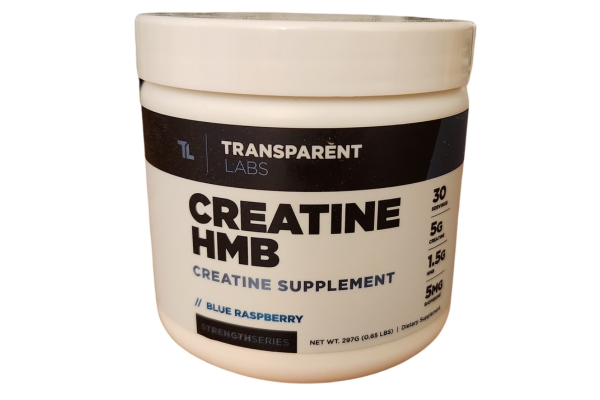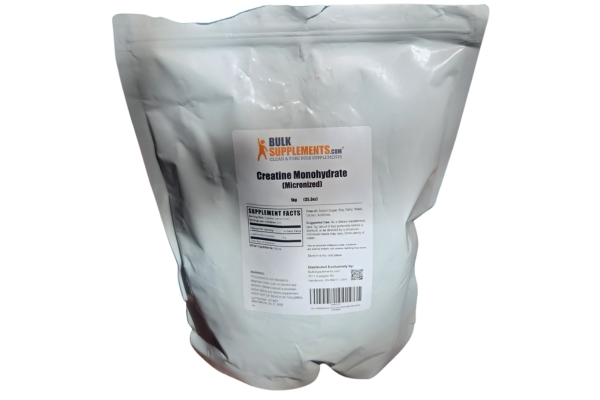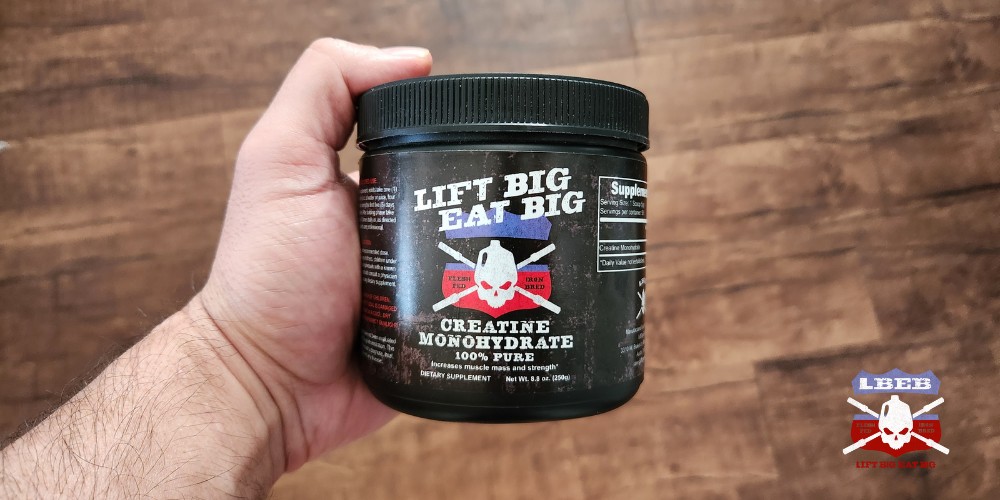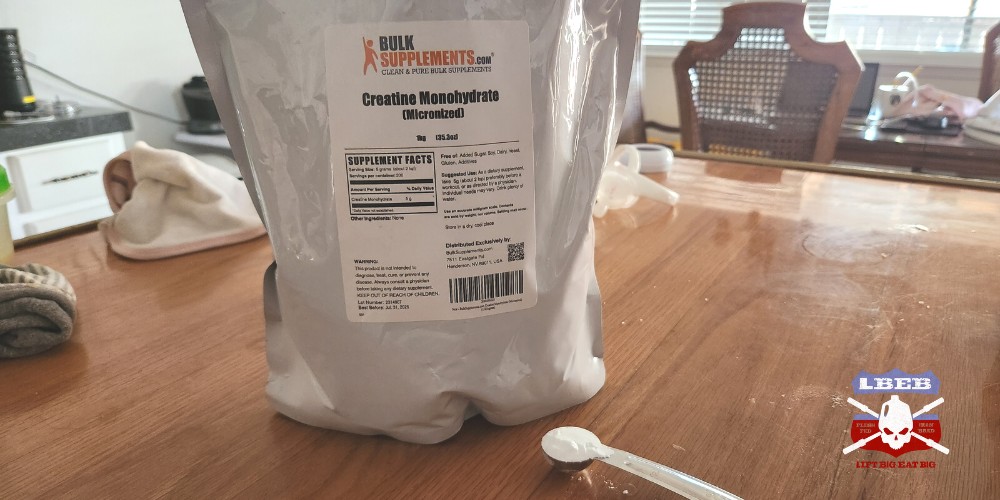Are you looking to give your glutes that extra edge? You're not alone. Creatine is the perfect supplement to add mass to your glutes. It'll make you stronger, and therefore, you can lift heavier loads to grow bigger glutes.
However, not all creatine is created equally. Some creatine supplements may not even contain what's on the label.
So, I’ve curated the ultimate list of the best creatine for glute growth.
Header | Best Creatine For Glute Growth | Runner-Up Creatine For Glute Growth | Best Budget Creatine For Glute Growth |
|---|---|---|---|
Product | |||
Size | 250 g | 297 g | 100 g - 5 kg |
# of Servings | 50 | 30 | 20 - 1000 |
Creatine per Serving | 5 g | 5 g | 5 g |
Price |
Table of Contents
- Best Creatine For Glute Growth
- Best Runner-Up Creatine For Glute Growth
- Best Budget Creatine For Beginners
- Best Flavored Creatine For Beginners
- How To Pick The Best Creatine For Glute Growth
- Benefits Of Creatine For Glute Growth
- How To Take Creatine For Glute Growth
- Best Time To Take Creatine For Glute Growth
- Frequently Asked Beginner Creatine Questions
- Summary
Best Creatine For Glute Growth
Lift Big Eat Big 100% Pure Creapure® Creatine Monohydrate
Purity and absence of harmful ingredients is crucial when choosing a creatine supplement for glute growth. That's precisely what we offer with the Lift Big Eat Big Creatine Monohydrate.
This product is particularly apt for glute growth as we provide complete transparency about its contents. Our Certificate of Analysis (CoA) confirms that our creatine is pure and uncontaminated.
We use exclusively Creapure® creatine monohydrate, renowned for its 99.9% purity [1][2]. Our CoA underlines this claim, showcasing why our product stands out in the market.
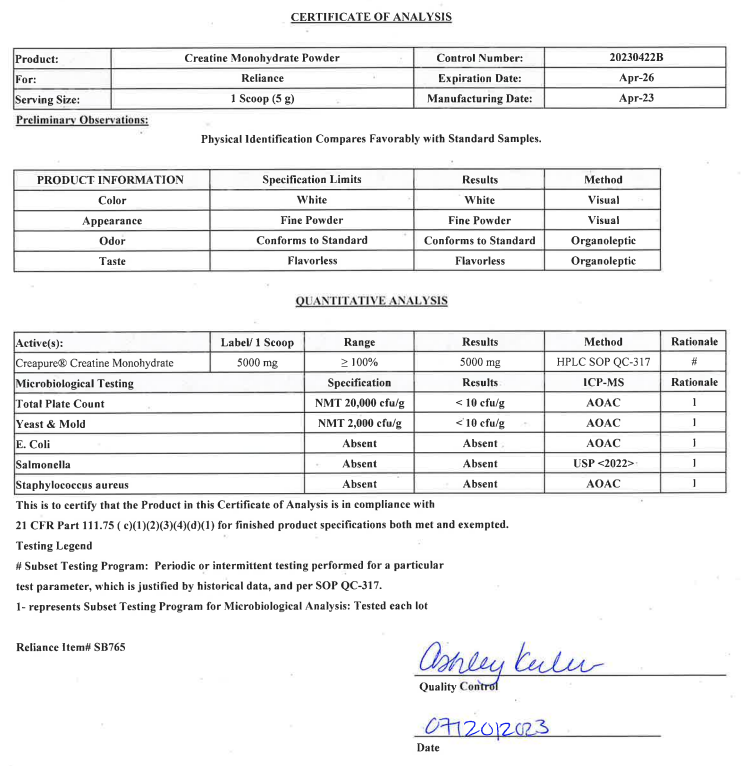
It's formulated to enhance strength, power, and muscle growth by replenishing ATP, the primary energy source in muscles.
This makes our creatine ideal for weightlifters and athletes in sports requiring rapid, high-energy actions, like football, basketball, or track and field.
However, be cautious with inexpensive creatine options available online. Many of these products may contain impurities or unwanted substances, and only a small fraction undergo rigorous testing.
For instance, only about 8% of creatine supplements sold on Amazon have been scrutinized for impurities [3].
Our product is straightforward – pure, high-quality, unflavored creatine monohydrate without any fillers or flavors.
A single tub with 50 servings costs $39.99, which breaks down to $0.80 per serving. Opting for our three-tub bundle offers 150 servings for $99, with complimentary shipping in the U.S. This reduces the cost to just $0.66 per serving.
Pros
Cons
Best Runner-Up Creatine For Glute Growth
Transparent Labs Creatine Monohydrate With HMB
A pure creatine monohydrate product must be free from contaminants or banned substances.
Transparent Labs meets these criteria and includes additional ingredients like HMB and BioPerine, which might enhance gym gains, though their effectiveness is debatable [11].
Transparent Labs Creatine HMB contains 5 g of creatine monohydrate, 1.5 g of HMB, 5 mg of BioPerine, and 500 IU of Vitamin D per serving.
Its advantages include a third-party testing certification (informed sport tick), ensuring each batch is free from banned substances, and a transparent Certificate of Analysis and Composition.
It offers a variety of flavors, which taste great. However, it is priced higher than other creatine brands at $1.67 per serving, and the HMB component has an unpleasant odor.
Despite these cons, the product is still considered an excellent choice for competitive athletes and muscle-building enthusiasts due to its quality and the potential benefits of its added ingredients.
You can read an in-depth breakdown in my Transparent Labs Creatine HMB review.
Pros
Cons
Best Budget Creatine For Beginners
Bulk Supplements Creatine Monohydrate
For those who are budget-conscious, such as students, choosing Bulk Supplements is a smart decision. Initially catering to businesses, this NSF-certified company now offers its products directly to consumers.
They provide creatine in various sizes, from compact 100 g packets to larger quantities sufficient for extended periods. The creatine is nearly flavorless, though it carries a mild bitter aftertaste when consumed alone.
Bulk Supplements' creatine monohydrate is notably affordable, mainly when purchased in larger amounts. A three-year supply can be obtained for $145, which equates to a 5 kg bag containing 1000 servings.
The packaging might not remain airtight over time though. To ensure the creatine stays fresh, transferring it to a different container for long-term storage is advisable.
Pros
Cons
Best Flavored Creatine For Beginners
Legion Recharge Post-Workout
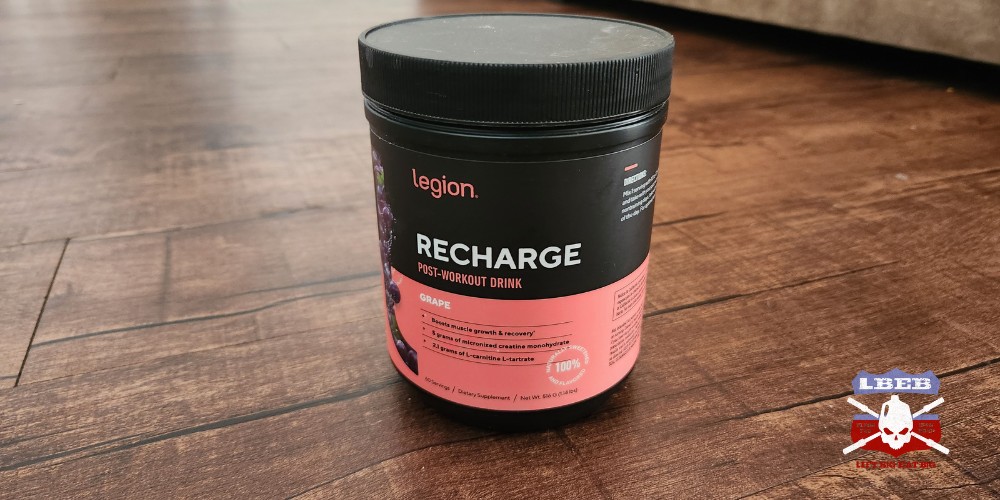
Flavorless supplements work for people who mix them in other flavored drinks. Some want to drink their creatine in water with flavor. Flavored supplements are easier to get down for beginners as it's like drinking juice.
Legion Recharge ticks all the boxes. Third-party tested for impurities, creatine monohydrate, and made in the USA in NSF-certified, FDA-inspected, and cGMP-compliant facilities.
Further, they don't use artificial flavors or sweeteners and instead are naturally flavored with stevia. They've also added L-carnitine, intending to be taken post-workout, as L-carnitine may reduce muscle soreness when taken after a workout [4].
Regarding flavors, you have sour candy, strawberry lemonade, fruit punch, and watermelon. I'm a sour candy kinda guy with this creatine, and it's a nice break from drinking water throughout the day.
Pros
Cons
How To Pick The Best Creatine For Glute Growth
Purity
Purity should be your top consideration when selecting creatine for enhancing glute development.
Creapure®, celebrated for its 99.9% pure creatine monohydrate composition, is often recognized as the benchmark for quality.
Aim for creatine products featuring Creapure® to guarantee superior quality.
Opt for a creatine supplement that has undergone rigorous testing for both purity and efficacy.
It is advisable to select a brand that issues a Certificate of Analysis (CoA), as it demonstrates independent verification of the product's purity.
This degree of transparency might not be available with many supplements, particularly those sold on platforms like Amazon.
Type
The only creatine you should consider is creatine monohydrate. As quoted in Science Direct, “all alternative forms of creatine [monohydrate] found in this investigation utilize marketing hyperbole to sell their products” [3].
Here's a list of the different types of creatine companies will try to sell you:
Unfortunately, none have the evidence supporting them like creatine monohydrate does, which maximally saturates the muscle [1].
Of these, 7 have no evidence to support bioavailability, efficacy, and safety, and another 7 have limited evidence.
The last two are creatine HCL and creatine anhydrous, which likely act similarly to creatine monohydrate.
Powder vs. Capsules vs. Gummies
Creatine capsules are a convenient option for active, on-the-go lifestyles due to their portability. Yet, for daily consumption, there are more efficient alternatives.
Many capsules are typically required to meet the advised daily intake of 3 to 5 grams. Additionally, capsules tend to be costlier and usually offer less than a month's supply.
Conversely, creatine powder is a more economical choice. It provides more servings for a lower cost, with one pack typically lasting several months.
This makes it a more practical and budget-friendly option for regular usage.
Though a novel approach to creatine supplementation, creatine gummies have drawbacks similar to capsules, if not greater.
Some creatine gummy variants include up to 14 grams of sugar with every 5 grams of creatine.
The value isn't comparable despite paying a similar price for a 30-day supply as you would for powder that lasts between 50 to 100 days. Powder remains the better option.
Price
Creatine monohydrate stands out not just for its efficacy but also for being budget-friendly.
Some brands market alternative forms of creatine at prices significantly higher than monohydrate, touting superior benefits [3].
However, this can frequently be a tactic to increase profits rather than offering any real advantage.
Opting for high-quality creatine monohydrate is advisable as it offers excellent value for your investment.
However, be cautious of unusually low prices, which could indicate substandard quality. The ideal approach is to find a balance: choose a reasonably priced product sourced from a trustworthy manufacturer.
Benefits Of Creatine For Glute Growth

More Strength & Size
Research shows creatine enhances muscle strength and size due to its role in ATP regeneration. ATP is our muscles' primary energy source for short, intense bursts of power, like when you're crushing heavy squats or deadlifts.
You can expect an approximate 8% increase in strength based on meta-analysis findings [5].
Perform More Reps
An increase in strength also means being able to perform approximately 14% more reps at a given load [5].
Meaning if you can bench press 225 lbs for 10 reps, you'll be able to eke out an extra rep or 2 once your muscles are fully saturated with creatine.
Increase Water Weight
Starting a creatine supplement regimen typically includes a loading phase where 20 grams are consumed each day for about 5-7 days.
You don't have to perform a creatine loading phase, but if you do, you can expect a 1-3 kg weight gain increase due to water retention [6][7].
This initial reaction is short-term, and many people mistakenly believe it continues over the long term despite a lack of scientific proof to support such a claim [8].
But this water weight is a positive sign, especially for glute growth. It means creatine is saturating the muscles, leading to performance increases.
How To Take Creatine For Glute Growth
There are two primary methods to take creatine for glute growth: loading and non-loading. The choice between them hinges on the urgency of desired results.
In the loading technique, you consume 20 grams of creatine daily for six days. This amount is divided into smaller doses throughout the day to aid digestion.
Following the loading phase, a maintenance dose of 2-5 grams daily is recommended to maintain elevated muscle creatine levels [9].
Alternatively, the non-loading approach might be more suitable if time is not a pressing factor. This involves taking a consistent daily dose of 3-5 grams of creatine.
This method takes approximately a month to completely saturate the muscles with creatine, but it offers a gradual and manageable regimen [9].
Unless immediate performance improvement is needed, the non-loading strategy is often the more practical choice for daily integration.
Best Time To Take Creatine For Glute Growth
The timing of creatine intake isn't crucial as long as it's consumed daily.
Limited studies indicate that taking creatine post-exercise could be more beneficial for muscle growth, though not necessarily for strength enhancement [10].
The speed at which creatine reaches the muscles isn't clearly understood, and since creatine doesn't act as a stimulant, it's most practical to take it at a time that ensures you'll remember it every day.
Frequently Asked Beginner Creatine Questions
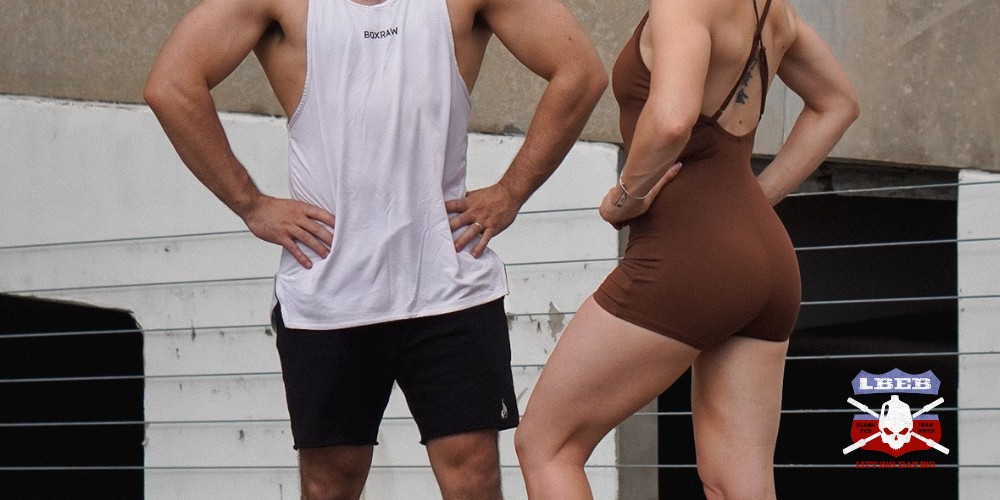
What Is The Best Time To Take Creatine For Glute Growth?
Take creatine at any time to maximize glute growth. Timing doesn’t matter. Taking creatine daily is what matters.
Should You Take Creatine On Rest Days?
You should take creatine on rest days to maintain consistency and keep your muscles fully saturated with creatine.
How Does Creatine Help With Muscle Recovery?
Creatine helps with muscle recovery by supporting the replenishment of ATP, providing energy to muscles, and reducing muscle protein breakdown after vigorous exercises.
Is Hydration Important When Taking Creatine?
Staying hydrated is crucial when taking creatine because it helps maximize the muscle-hydrating effects of the supplement and supports overall muscle function and growth.
Does Consistent Creatine Use Contribute To Glute Growth?
Consistent use of creatine and a proper fitness and nutrition regimen can significantly contribute to glute growth and overall muscle development.
Can Creatine Cause Hair Loss?
Creatine does not cause hair loss, and no evidence suggests it does. It's an old myth based on one study that saw an increase in DHT, which people extrapolated to potentially losing hair. But this was still within the normal range.
Summary
Regarding supplements, creatine is one of the best for glute growth. Lift Big Eat Big 100% Pure Creatine Monohydrate is the best option for glute growth since it's pure gold standard creatine with no fillers or contaminants.
If you're looking for flavor, Transparent Labs Creatine HMB is an excellent choice, and Bulk Supplements does creatine on a budget to grow your booty.
References
- Kreider, R. B., Jäger, R., & Purpura, M. (2022). Bioavailability, efficacy, safety, and regulatory status of creatine and related compounds: A critical review. Nutrients, 14(5), 1035.
- Jäger, R., Purpura, M., Shao, A., Inoue, T., & Kreider, R. B. (2011). Analysis of the efficacy, safety, and regulatory status of novel forms of creatine. Amino acids, 40, 1369-1383.
- Escalante, G., Gonzalez, A. M., St Mart, D., Torres, M., Echols, J., Islas, M., & Schoenfeld, B. J. (2022). Analysis of the efficacy, safety, and cost of alternative forms of creatine available for purchase on Amazon. com: are label claims supported by science?. Heliyon, 8(12).
- Yarizadh, H., Shab-Bidar, S., Zamani, B., Vanani, A. N., Baharlooi, H., & Djafarian, K. (2020). The effect of l-carnitine supplementation on exercise-induced muscle damage: a systematic review and meta-analysis of randomized clinical trials. Journal of the American College of Nutrition, 39(5), 457-468.
- Rawson, E. S., & Volek, J. S. (2003). Effects of creatine supplementation and resistance training on muscle strength and weightlifting performance. The Journal of Strength & Conditioning Research, 17(4), 822-831
- Kraemer, W. J., & Volek, J. S. (1999). Creatine supplementation: Its role in human performance. Clinical Sports Medicine, 18, 651–666.
- Deminice, R., Rosa, F. T., Pfrimer, K., Ferrioli, E., Jordao, A. A., & Freitas, E. (2016). Creatine Supplementation Increases Total Body Water in Soccer Players: a Deuterium Oxide Dilution Study. International Journal of Sports Medicine, 37, 149–153.
- Francaux, M., & Poortmans, J. R. (2006). Side effects of creatine supplementation in athletes. International Journal of Sports Physiology and Performance, 1, 311–323. doi: 10.1123/ijspp.1.4.311.
- Hultman, E., Soderlund, K., Timmons, J. A., Cederblad, G., & Greenhaff, P. L. (1996). Muscle creatine loading in men. Journal of applied physiology, 81(1), 232-237.
- Forbes, S. C., & Candow, D. G. (2018). Timing of creatine supplementation and resistance training: A brief review. Journal of Exercise and Nutrition, 1(5).
- Phillips, S. M., Aragon, A. A., Arciero, P. J., Arent, S. M., Close, G. L., Hamilton, D. L., ... & Willoughby, D. S. (2017). Changes in Body Composition and Performance With Supplemental HMB‐FA+ ATP. The Journal of Strength & Conditioning Research, 31(5), e71-e72.

